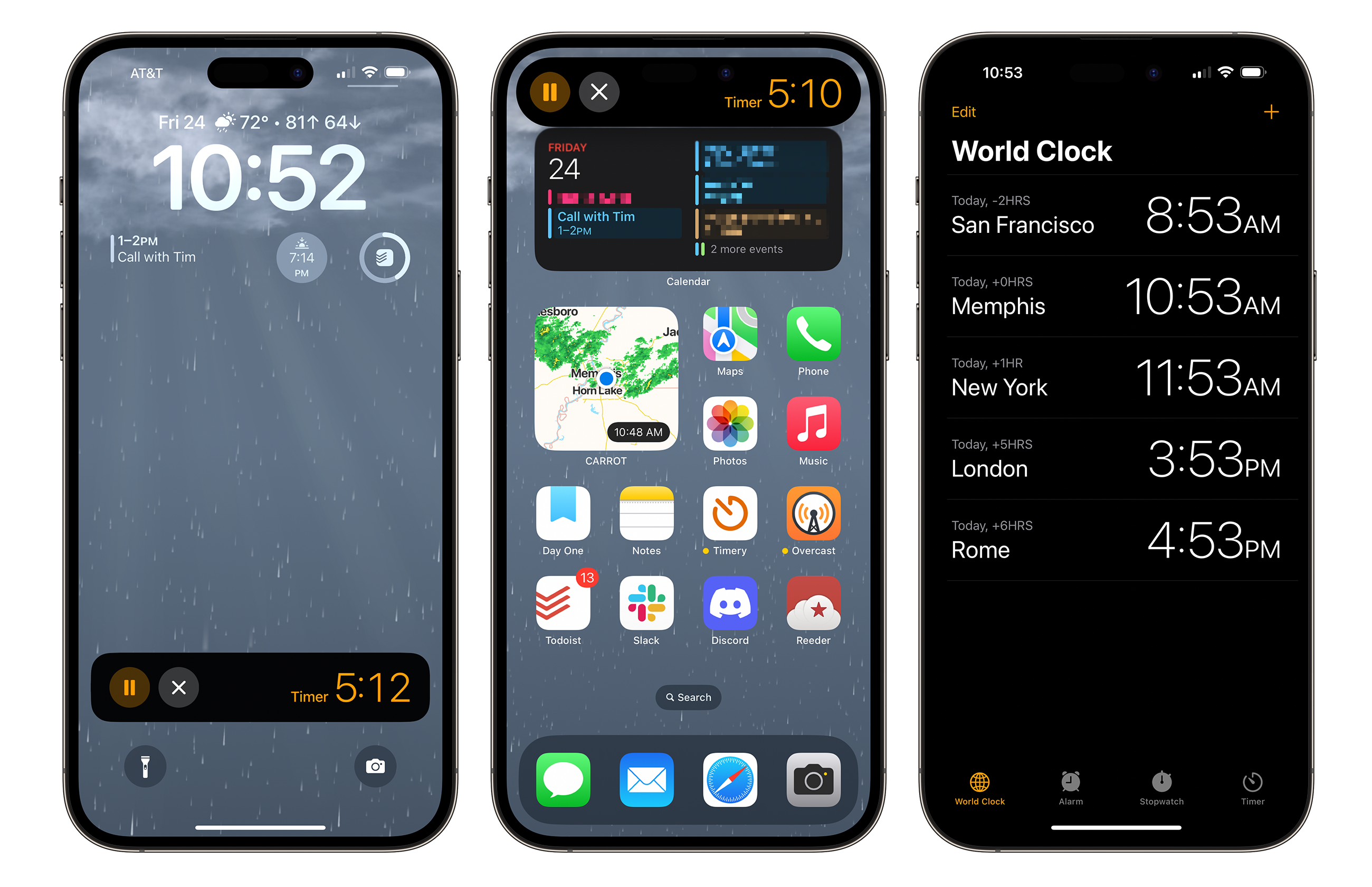UPDATE: This has been fixed as of iOS 17!
Apple’s Live Activity feature has begun to take off, with more and more apps doing interesting things with the new user interface. Sadly, one of Apple’s own uses for it doesn’t work the way it should.
In this image, you can see the Live Activity on the lock screen, expanded from the Dynamic Island and a screenshot of Clock.app itself:

First, we have the issue of the Live Activity on the lock screen. Live Activities from third-party developers open the corresponding app when the Live Activity is tapped. Apple’s timer Live Activity doesn’t follow this convention. Instead, tapping the timer itself doesn’t do anything whatsoever. A user can pause or cancel the timer from the Lock Screen, but managing anything past that requires launching Clock.app from somewhere else in the system.
I understand that Apple’s apps are often able to do things that third-party apps can’t, but these features make the timer Live Activity behave so differently than other Live Activities that it can be frustrating to use. It’s easy to cancel a timer, but hard to open the app that manages the timer itself.
When an iPhone 14 Pro is in use, the timer icon shows up in the Dynamic Island as expected. Pressing and holding it will expand the timer, showing the same controls as what is present on the lock screen. However, here — and only here — does tapping the Live Activity open the Clock.app.
For bonus points, I would love it if Apple would show the time at which the timer will go off, on both the lock screen and the expanded view within the Dynamic Island. Alas, that information isn’t visible anywhere except within the Clock app.
… which makes the fact that opening the Clock app from the timer Live Activity doesn’t open Clock to the timer tab feel pretty pretty pretty pretty bad. Instead, Clock.app opens to either the last tab the user was using, or if the app has been fully quit, it opens to the World Clock. Tapping a timer should always open the corresponding panel in the Clock app.
None of these bugs are showstoppers. I use my iPhone to set timers several times a week, but the user experience is clunky and comes across as downright buggy.
I’ve filed a Feedback with Apple about this: FB12078863.
PS: Where’s the stopwatch Live Activity, Apple?